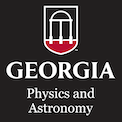One of the grand themes of modern astrophysics is the progressive chemical enrichment of the Universe. Since the hot beginnings with little more than hydrogen and helium, the 4% mass fraction of the mostly metal free baryon component has been enriched to about 2%, by mass, in elements beyond H and He. The underlying cycle of star formation, stellar evolution, static/dynamic (explosive) nucleosynthesis and feedback of freshly processed material to the interstellar medium is also critical for our understanding of galactic evolution, and thus our general understanding of the building blocks of the Universe. This colloquium will discuss how gamma-ray astronomy is used to trace some of the relevant quantities involved in local chemical evolution, through “Astronomy with Radioactivities”, and how observations in the gamma-ray regime shed light on chemical evolution on cosmic scales.


